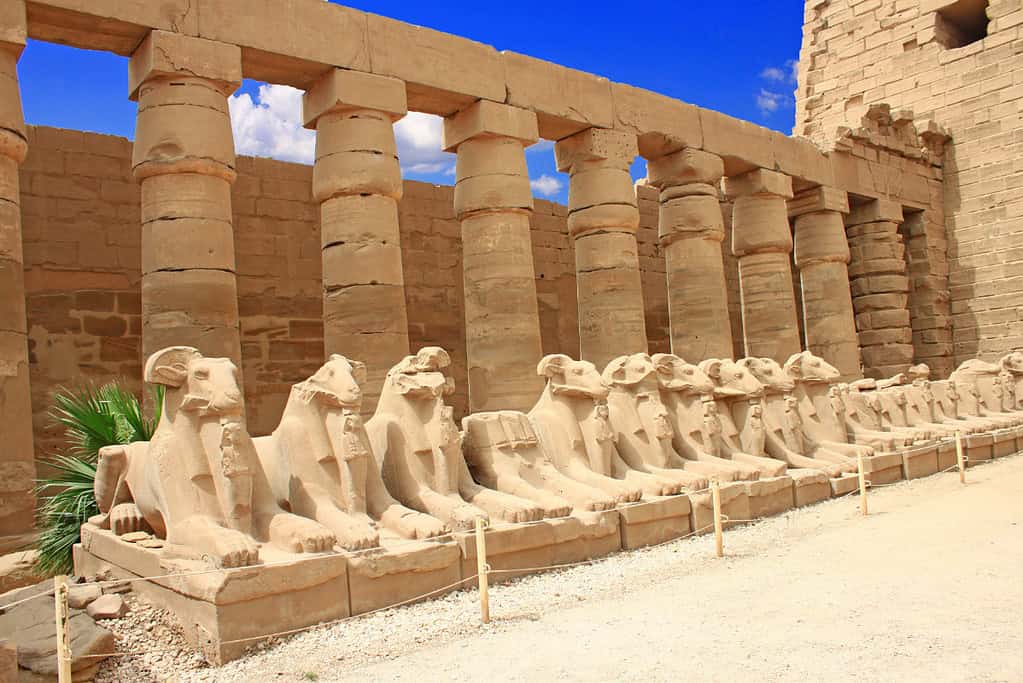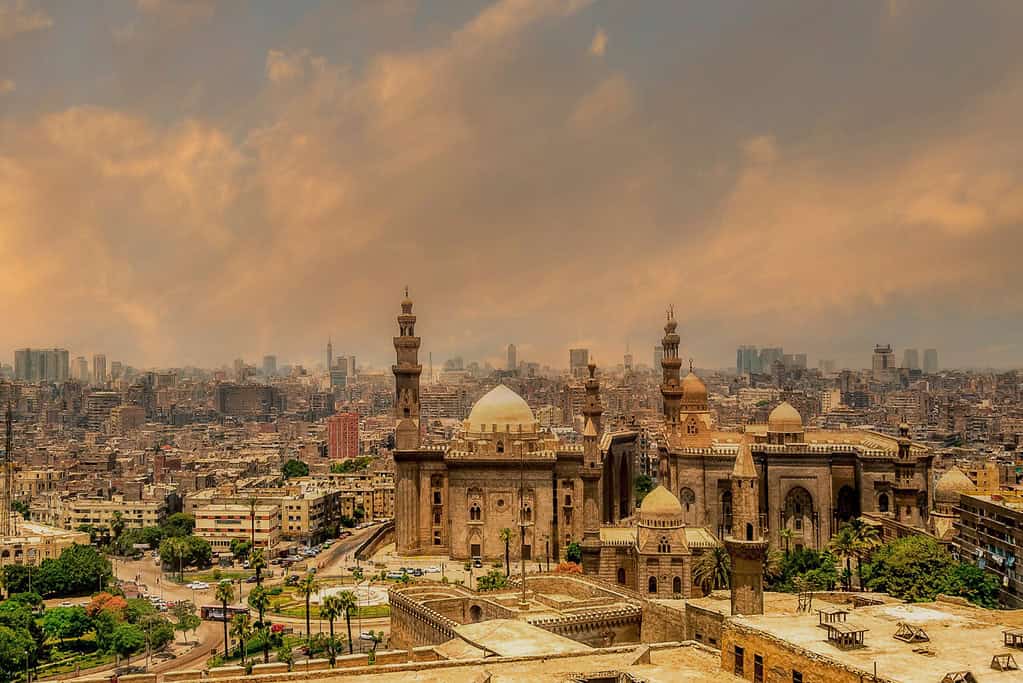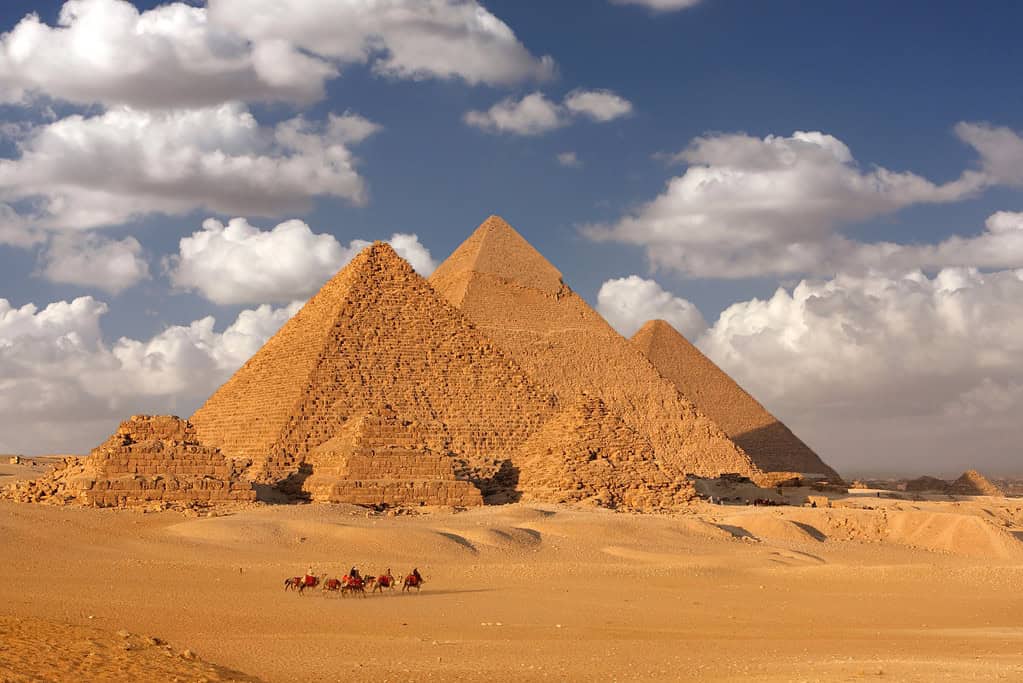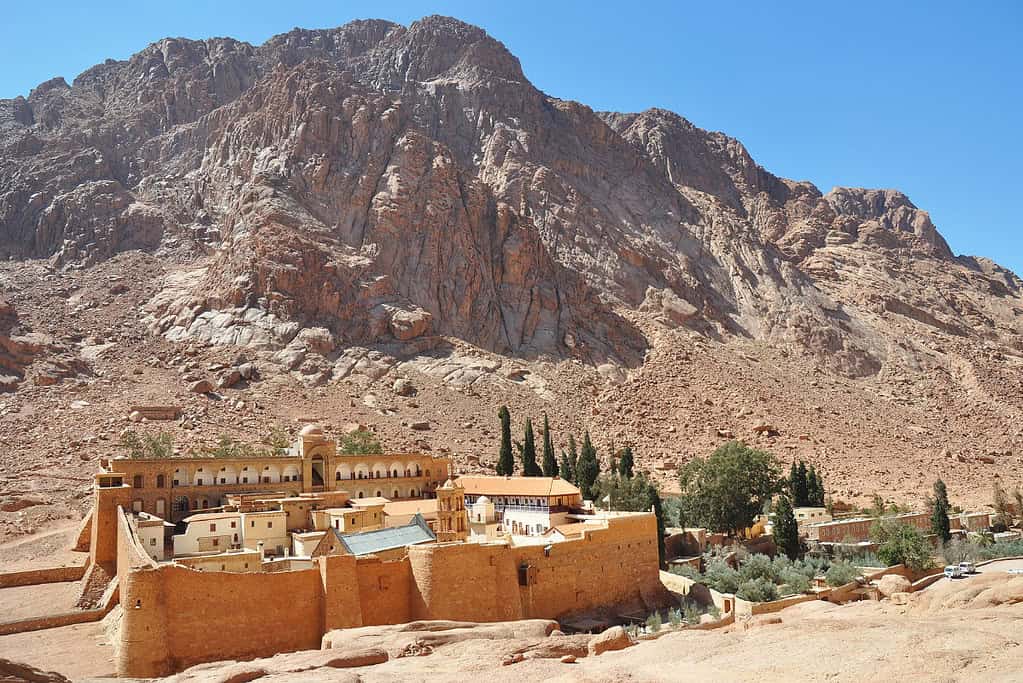Table of Contents
The UNESCO Sites in Egypt have resulted from recognizing 7 cultural and natural landmarks as UNESCO World Heritage Sites in Egypt and 34 locations on the Egypt UNESCO tentative list. These tourist sites in Egypt are acknowledged for their unique and valuable cultural, natural, artistic, and historic significance and are preserved for future generations to enjoy.
In addition to these 7 sites in the Egypt UNESCO list, there are many other places to travel to Egypt that are being considered for UNESCO recognition. These sites, listed on the tentative list, showcase the country’s rich cultural heritage and are waiting for approval to join the prestigious and famous World Heritage Sites list.
To help visitors discover these remarkable Egypt tourist attractions, we have put together an interactive map of the UNESCO sites in Egypt.
Egypt UNESCO Map
Click markers to show information and photo.
Egypt UNESCO Map
UNESCO World Heritage Sites in Egypt
There are 7 UNESCO World Heritage Sites in Egypt. All of these seven sites are listed under the Cultural category.
- Abu Mena
- Ancient Thebes with its Necropolis
- Historic Cairo
- Memphis and its Necropolis – the Pyramid Fields from Giza to Dahshur
- Nubian Monuments from Abu Simbel to Philae
- Saint Catherine Area
- Wadi Al-Hitan (Whale Valley)
UNESCO World Heritage Sites in Egypt are protected locations for their cultural and natural importance.
Abu Mena

A once thriving early Christian holy city, Abu Mena is now recognized as a UNESCO World Heritage Site for its cultural importance. The city, built over the tomb of the martyrs of Menas of Alexandria, features a church, basilica, streets, monasteries, a baptistery, and more.
Ancient Thebes

This ancient city, once the capital of Egypt, was known for its association with the god Amon. Today, visitors see famous temples such as Luxor and Karnak and the necropolises at the Valley of the Queens and the Valley of the Kings. Ancient Thebes is a prime example of the height of Egyptian civilization.
Historic Cairo

One of the oldest Islamic cities in the world, Historic Cairo is known for its impressive mosques, fountains, hammams, and madrasas. It was established in the 10th century and peaked in the 14th century as the capital of the Islamic World.
Memphis and Necropolis

The Pyramid Fields: As the capital of the Old Kingdom of Egypt, Giza boasts many impressive monuments such as temples, rock tombs, and the pyramids, once one of the Seven Wonders of the Ancient World.
Nubian Monuments

In the Governorate of Aswan, this archaeological site holds many significant monuments to the history and culture of the region, including Abu Simbel Temples and the Sanctuary of Isis at Philae. UNESCO launched an international campaign from 1960 to 1980 to save these monuments from the rising Nile River.
Saint Catherine area

On Mount Horeb, the Orthodox Monastery of St. Catherine has been a sacred site for Christianity, Islam, and Judaism for centuries. The oldest functional Christian monastery was built in the 6th century and is set amidst a rugged mountain backdrop.
Wadi Al-Hitan

As the only natural site on the list of UNESCO World Heritage Sites in Egypt, Whale Valley in the Western Desert showcases the fossil remains of now-extinct whales, highlighting the evolution from a land-based mammal to one of the ocean.
Egypt UNESCO tentative list
- Siwa archaeological area
- Temple of Serabit Khadem
- North Sinai archaeological Sites Zone
- Temple of Hator built by Ramses III
- Dahshour archaeological area
- El Fayoum
- El-Gendi Fortress
- Rutho Monastery
- Wadi Feiran
- Pharaon Island
- Dahab
- Minia
- Newibah castle
- Ras Mohammed
- Gebel Qatrani Area, Lake Qaroun Nature Reserve
- Southern and Smaller Oases, the Western Desert
- Bird Migration Routes
- Desert Wadis
- Mountain Chains
- Great Desert Landscapes
- Alexandria, ancient remains, and the new library
- Abydos, the city of pilgrimage of the Pharaohs
- Pharaonic temples in Upper Egypt from the Ptolemaic and Roman periods
- Necropolises of Middle Egypt, from the Middle Empire to the Roman period
- Raoudha nilometre in Cairo
- The monasteries of the Arab Desert and Wadi Natrun
- Two citadels in Sinai from the Saladin period (Al-Gundi and Phataoh’s island)
- The An-Nakhl fortress, a stage on the pilgrimage route to Mecca
- Oasis of Fayoum, hydraulic remains, and ancient cultural landscapes
- Historic quarters and monuments of Rosetta/Rachid
- Dababiya
- Helwan Observatory
- Kharga Oasis and the Small Southern Oases
- Egyptian Museum in Cairo
Tours in Egypt
Our choices of tours in Egypt are divided into thematic features such as Historic Cairo, Abu Mena, Ancient Thebes with its Necropolis, Nubian Monuments from Abu Simbel to Philae, and the Wadi Al-Hitan Valley Experience.


